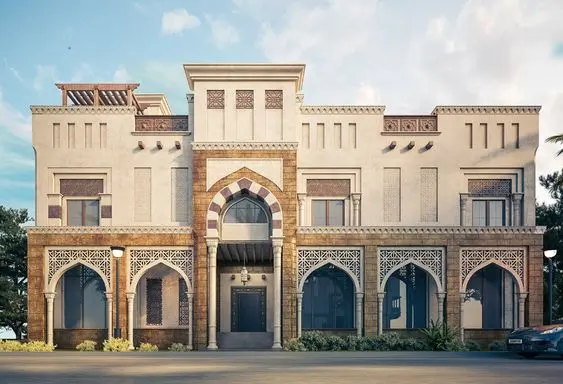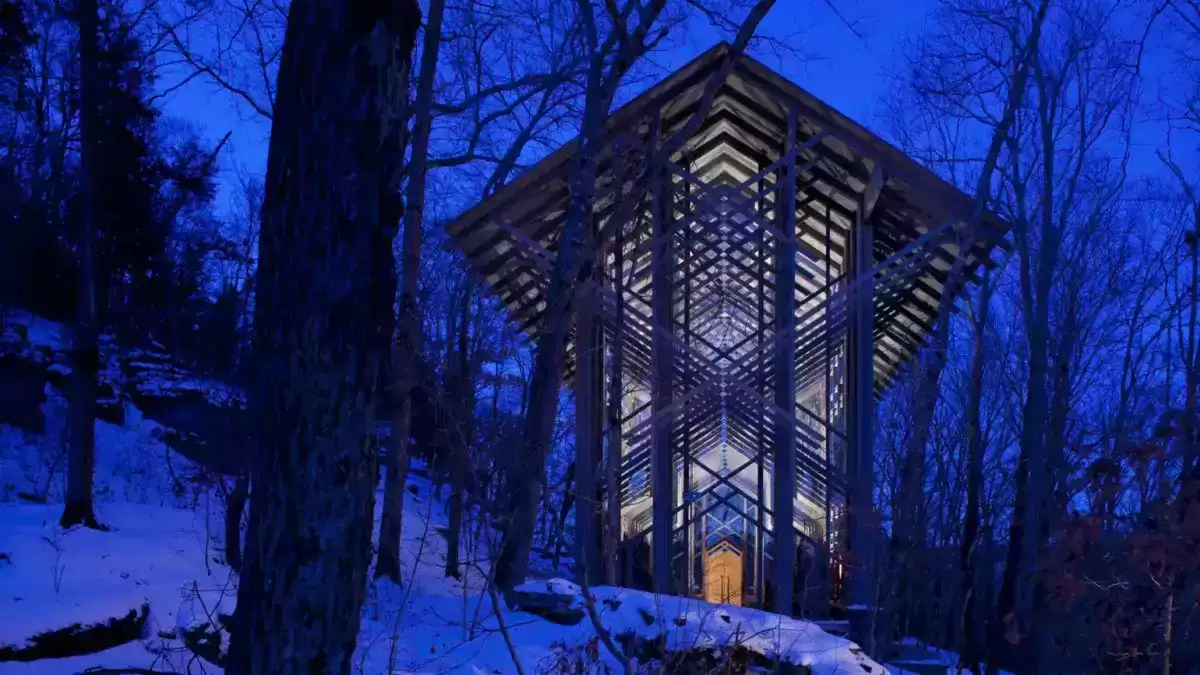Islamic building exteriors have long been known for their precise,
symmetrical geometry, while Modernism is represented by stark surfaces and clear lines.
There is no doubt that architecture is the mother of the arts, as architects and artists call it,
as architecture constitutes most of the internal and external artistic and creative activities.
With its distinctive architectural facades. It also includes creations of wood, marble,
metal etc. with different structural, plastic and functional design solutions.
This makes architecture a permanent catalyst for artistic creativity and innovation and a source of inspiration in various fields of art.
As for Islamic architecture, with all its diverse aesthetic and artistic values,
it has inspired the world, artists and designers since its appearance.

This Islamic inspiration was reflected in various artistic activities,
most notably the “School of Modern Art in Europe.”
Which benefited from Islamic arts and was influenced by them artistically and creatively.
From the first glance at the designs of Islamic buildings, the viewer is particularly attracted to them.
Because of its architectural facades in an elegant, creative aesthetic style inspired by endless art
At the same time, many designs appeared in the field of clothing inspired by various types,
Such as Islamic decoration and textiles to this day.
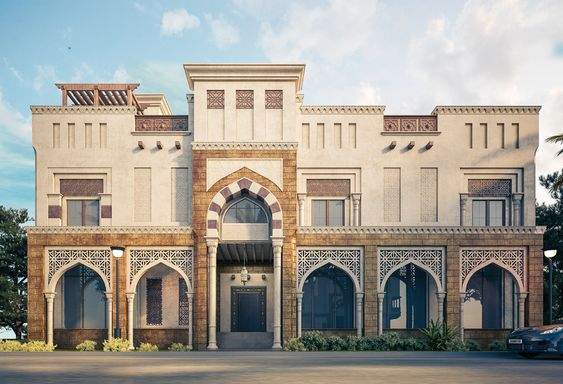
General principles of Islamic architecture
Originality
Authenticity is one of the principles on which Islamic architecture is based,
however, “authenticity” is not synonymous with “modernity” here.
Rather, it refers to keeping up with local traditions but without imitating the past,
which requires a deep study of traditional architecture (which is the greatest form of heritage today).
As Islam spread widely, Muslims adopted building practices everywhere they lived but adapted them to suit their Islamic identity.
For example, the Dome of the Rock used local colors and ancient Roman columns in a way consistent with Islamic traditions.
This policy of “adoption and adaptation” can inspire contemporary architects to use traditional building techniques in a new way.
Modernity
Islam embraces modern science because the Qur’an encourages study and exploration.
Accordingly, Islamic architecture embraces the latest building techniques,
but without seeking to oppose historical building practices.
Such a balance between modernity and tradition lends itself to endless design opportunities in the contemporary world.
In this way, architecture will neither lose the identity of place nor the essence of time.
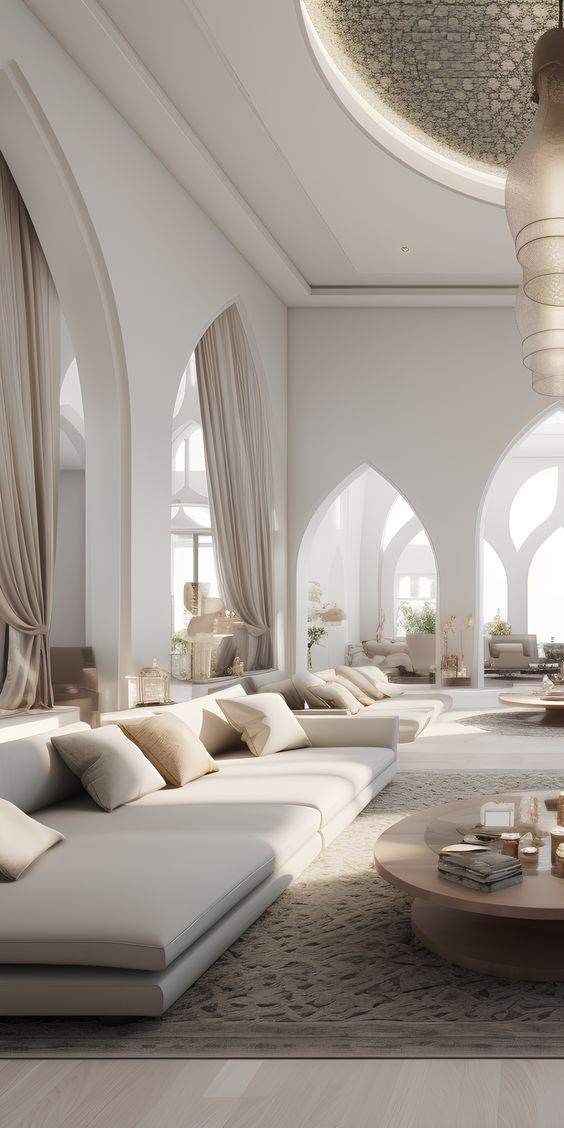
Materials, techniques and local geography
Many contemporary buildings stand awkwardly in their surrounding context because they blindly imitate Western ideals.
On the other hand, Islamic architecture promotes harmony between buildings, the environment, people and their Creator.
The great mosques of Cordoba, Edirne, and Shah Jahan used local architecture,
materials, and techniques to express the order and unity of Islamic architecture in their own way.
With the din of industrial development, people have begun to ignore their local heritage, but it is not too late.
We can still work to restore a sense of location, materials and topography in our buildings.

User focus
Islamic architecture comprehensively facilitates users’ activities at all stages of building design.
That is, you start thinking about users’ needs and aspirations from the conceptual stage to the final demos.
Heavenly and earthly
The religion of Islam recognizes and satisfies the physical and spiritual needs of man.
Likewise, the heavenly and earthly factors in Islamic architecture complement each other.
The endless intricate patterns on ceilings give architecture its soul,
while simplicity and sheer practicality give it its strength.
Islam also recommends adornment and rejects excessive luxury,
and Islamic builders and some modern scholars have also embraced this concept.
However, unlike modern architecture, Islamic architecture is never devoid of decoration,
but rather achieving balance always remains its goal.
Al-Jiwani in House Architecture
“Al-Jiwani” refers to the principle of providing all living facilities within the home.
Since Islam is a comprehensive way of life, its architecture provided everything,
including the outdoor experience, within the home.
Residents could literally enjoy open spaces, gardens, carvings and decoration, all in their luxurious homes.
The courtyard connecting all the rooms also offers stunning views while connecting residents to the sky,
and it is interesting to see such a rich home nowadays.
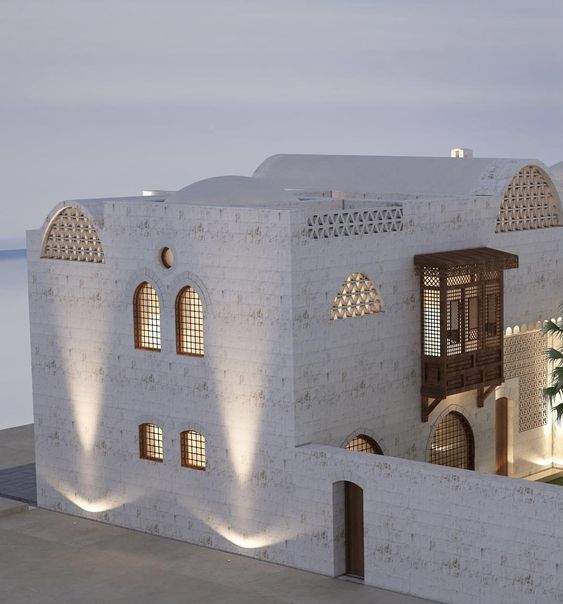
Climatic balance in houses with Islamic architecture
Most Islamic countries are located in hot and dry climates, so the architecture provided natural air conditioning.
Not by the equipment but by the structure itself, wind catchers have been built in,
to take advantage of the wind flowing outdoors and to provide the interior with natural ventilation.
Housing also requires strong insulation from heat, dust and pollutants.
To counter this, architects provided thick walls made of clay or wood (which are natural insulators).
Pure and simple, a distinctively personal retreat for AXOR | News | Architonic
The floors of the rooms were raised above the courtyard so that outside air does not leak into the rooms,
and the courtyard also retains fresh and moderate air.
This is after all the bottom air outlets have been closed.
Thus, the air continues to swirl around the courtyard, carrying with it the dust stuck in it.

Conclusion
Architecture today is more driven by the city grid than by the human scale.
With the rapid industrial growth, the factory provides all residential solutions, whether thermal or electrical.
Japanese wood carbonization technology that has spread globally
People have become lazier due to the superiority of technological progress,
which has undoubtedly stabilized our lives.
But it is not appropriate for architecture to rely entirely on these means and leave behind the natural means that traditional architecture used.
Contemporary architects may want to reconsider some of these traditional,
natural techniques to achieve sustainability in real time.
Elementorize – Architectural elements as buildings – Staircase

